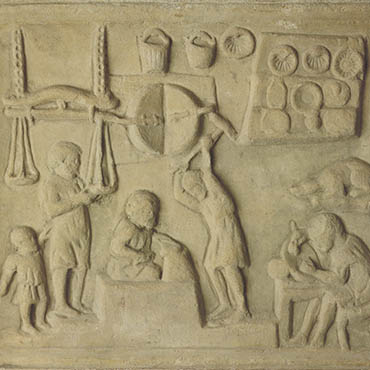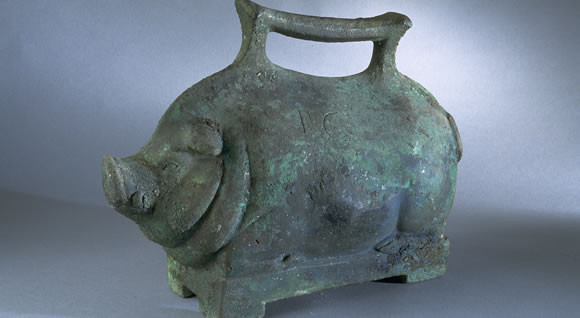13. Metalworking

In Pompeii, as in many other cities of Campania, metalworking had reached a high level of achievement.
While archeological excavations have revealed numerous metal objects, we still have not found any workshops where these production processes were practiced. An electoral inscription, however, tells us that the city had its own goldsmiths' guild.
Bronzeworking certainly reached extraordinary levels: household objects, pots and pans, tools, precision instruments, and numerous other utensils were made with bronze.
Metals were extracted from open air or alluvial deposits or from mines. The raw material was fused on the site of extraction with the aid of large quantities of wood and the ingots were marked to indicate ownership. Subsequently, the metal was exposed to very high temperatures and forged with hammer and anvil into the desired shapes. The Romans also used the technique of pouring fused metal into moulds for obtaining various objects.
Embossed work was carried out without heating. Artefacts of value were chiselled, polished and finished with the application of noble metals.


